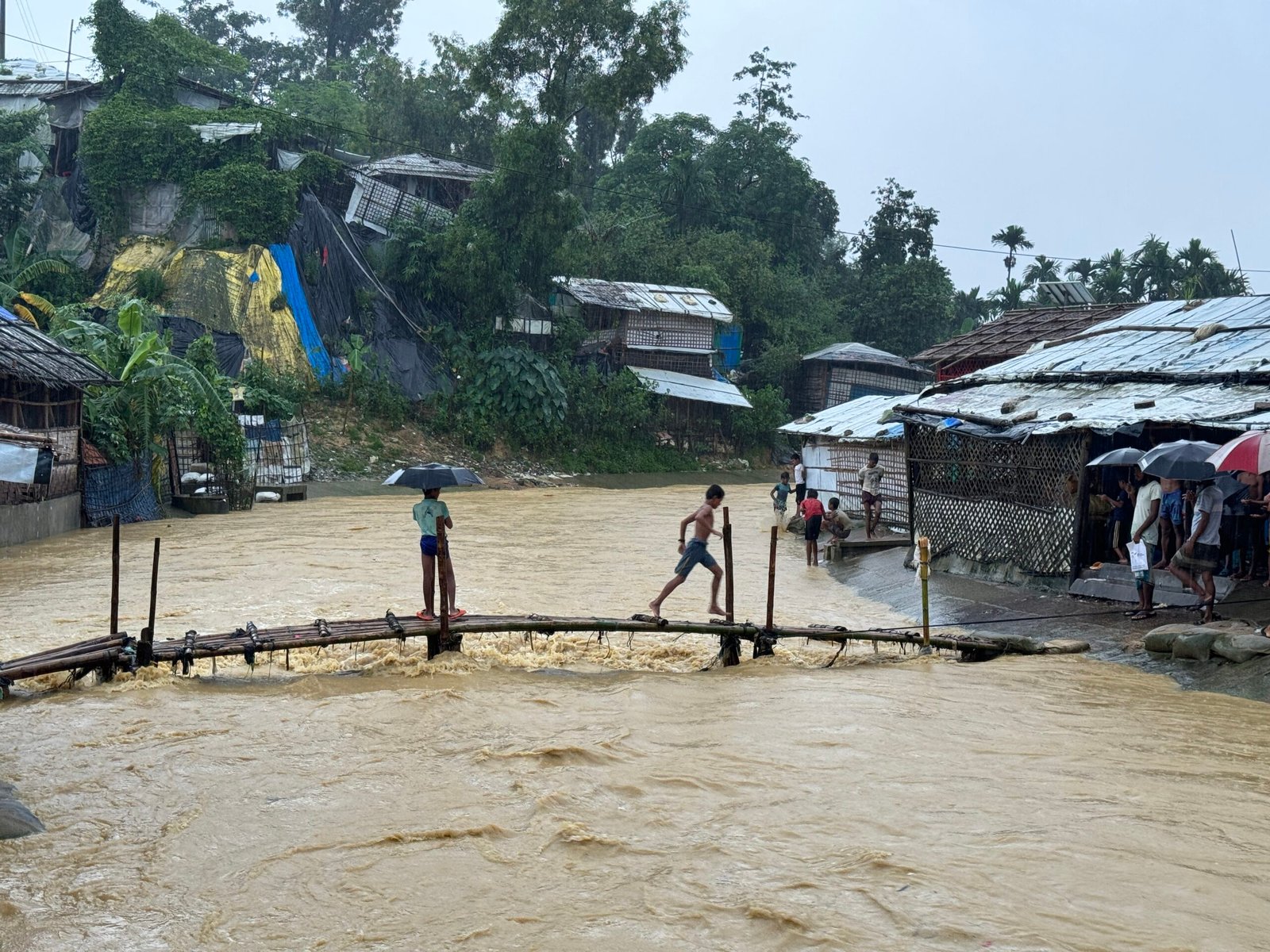There is approximately 1.3 million Rohingya refugees seek temporary refuge in the world’s largest refugee camp in Bangladesh. These refugees encounter numerous challenges and difficulties in their daily lives within the camps throughout the year. However, the monsoon season poses the most severe predicament for Rohingya refugees.
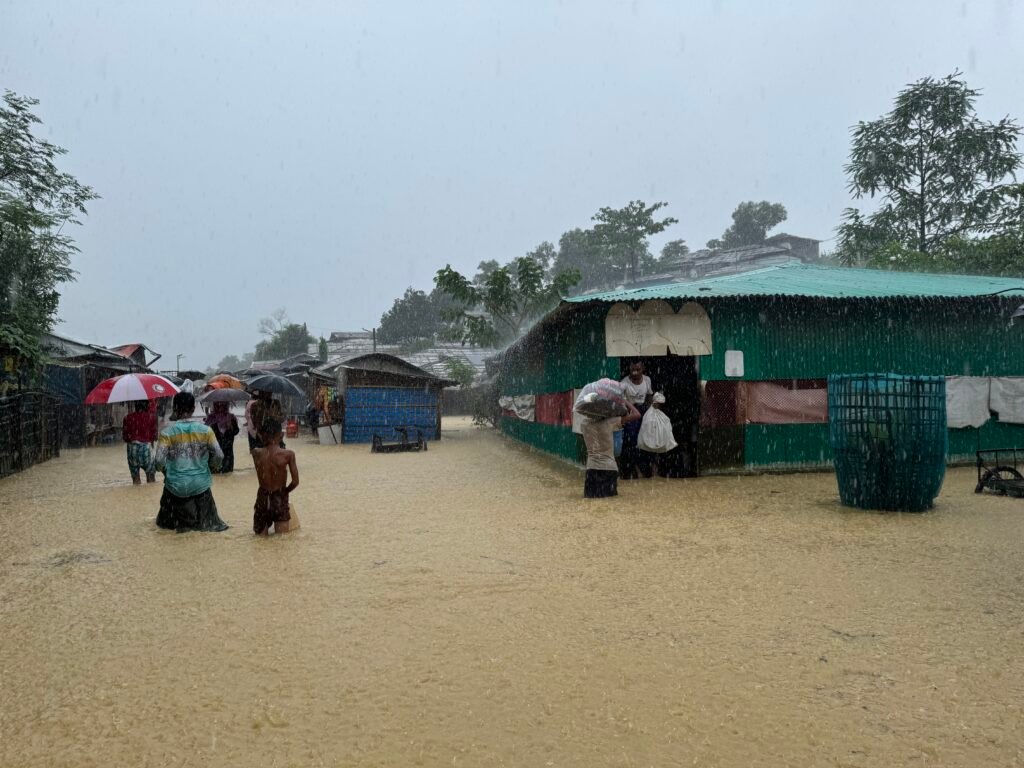
The refugee shelters are situated in low-lying and hilly areas, making them vulnerable to flooding and landslides.The confluence of streams and creeks frequently surpasses their ability to regulate the influx of water from various regions, leading to inundation of low-lying areas. Additionally, hilly regions are susceptible to erosion due to heavy rainfall, strong winds, and lightning strikes.
Monsoon season poses a significant threat to the lives of Rohingya refugees in camps due to frequent landslides, floods, soil erosion, and thunder strikes. During this period, approximately 10-12 refugees lose their lives in the camps. One such example is Mumtaz Begum, a 38-year-old widow with two children who resides near a vast landslide area. Begum recounts that she experiences sleepless nights due to the constant fear of landslides and the potential loss of life within her family in Balukhali camp. Like her shelter, there are thousands of shelters situated in landslide zones where incidents are likely to occur at any given time.
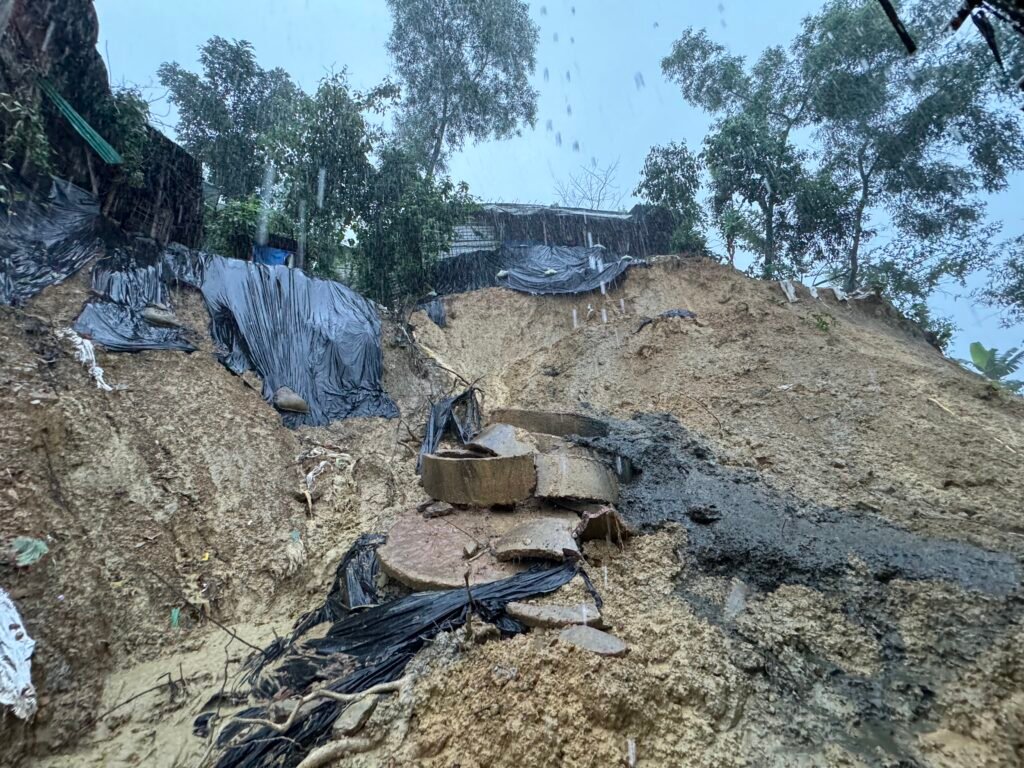
The relentless torrential rain has wreaked havoc in Rohingya camps, causing significant damage and destruction of low-lying and hilly shelters where the refugees are at grave risk. Landslides, soil erosion, shelter collapses, and floods have collectively affected numerous Rohingya refugees.
Ziaur Rahman, 8-year-old boy had gone missing after falling from a bamboo bridge in camp-5 around 10:00 am on last Sunday and his body has not yet been recovered that sparks widespread concern about child safety and infrastructure in the refugee camp.
Again, on Monday, in BaluKhali camp, a severe flood swept away one boy and an elderly woman. Fortunately, the community people into action and rescued them from the raging creek. The heavy rainfall caused widespread flooding, making it difficult for the individuals to seek safety.
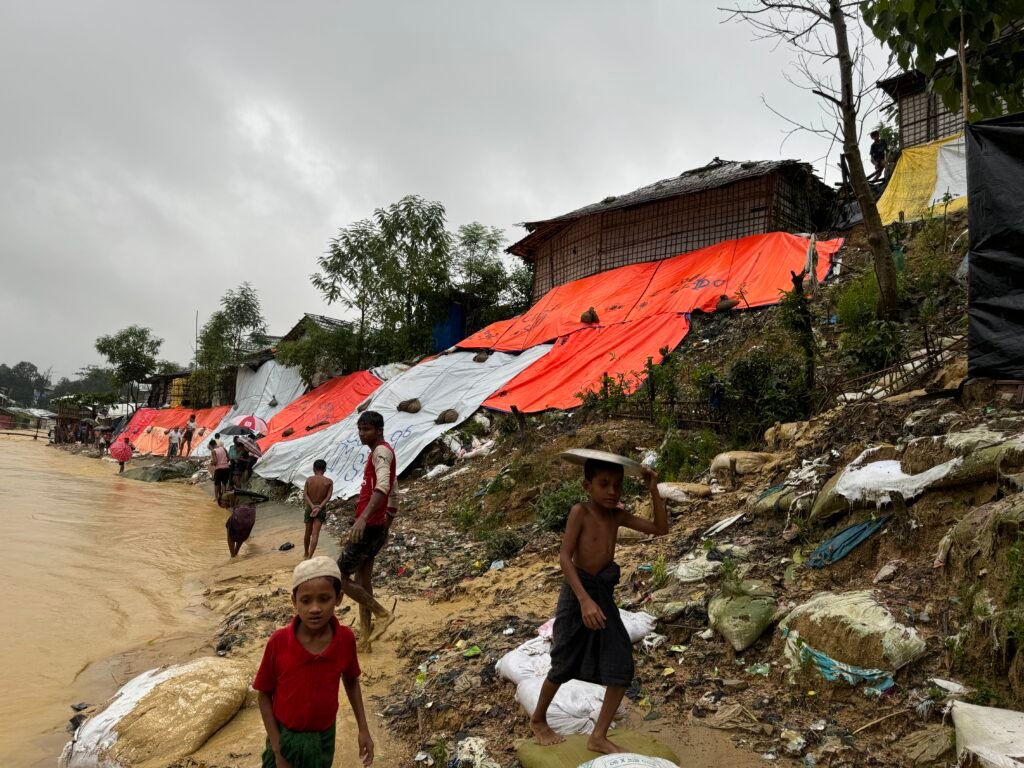
The months such as June, July and August make the heavy rain and huge destruction in these moments. The relentless rains in these months have also exacerbated the plight of refugees in various camps. Landslides and soil erosion have rendered numerous shelters inoperable, leaving the refugees in dire need of food, clothing, water supplies, and adequate shelter. Many have to sleep on the ground due to the presence of water and mud within the shelters.
Ohor Sultan, a 55-year-old man who resides with his family beside a creek in a low-lying area. He has expressed that his family can’t sleep or eat well for four months due to the monsoon season. His shelter floods during heavy rains, causing the floor to become wet, the walls to break, and all family materials to become damp. He has consistently expressed his desire to relocate to a safer location for his family, but this is not feasible due to the limited space available for constructing a new shelter. Consequently, their lives have been characterized by hardship and a constant state of anxiety.
According to the ISCG report, heavy rainfall has caused over 50 landslides in the hilly terrain of the camps, resulting in the destruction of more than 1,400 bamboo, tarpaulin, and other materials shelters. Consequently, 12,104 individuals have been directly affected. Still the rain has not stopped, and it keeps falling continuously in the coming days that will make more disasters as community people, NGOs and camp authorities are in huge concern for this.
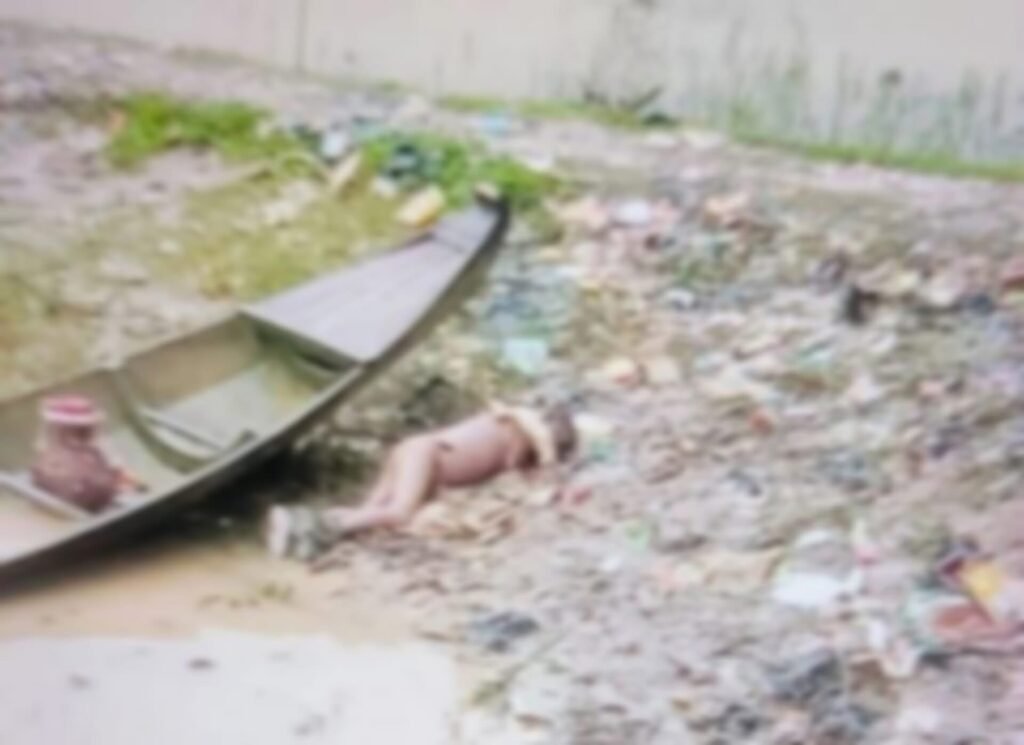
Abdullah, a 14 years old Rohingya boy from Camp-2E, went to collect some spinach leaves near a stream and the Custom Road area on 4 July 2025, close to the TV Tower, to help his family with food. But the rain had made the water very strong, and sadly, he slipped and was carried away by the flood.
Two young men jumped in to save him, but the water was too powerful. After two days, fishermen found the body of Abdullah under the Customs Bridge near Camp 8E.
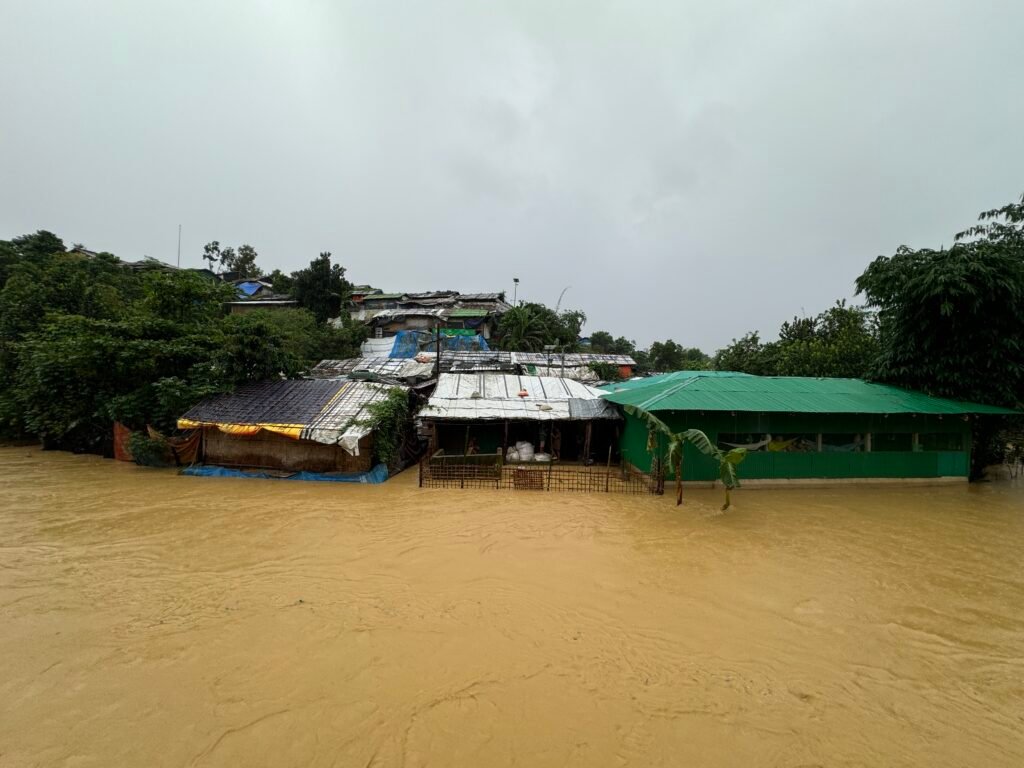
Furthermore, the continuous rain poses significant challenges for refugees during the nighttime. The solar lights installed within blocks and roads are rendered ineffective due to depleted batteries and solar energy. Consequently, thousands of Rohingya refugees are left without access to light and electricity during the night.
” Jamilah Begum resides alone with her elderly husband in a modest shelter devoid of personal use batteries and solar panels for light. She relies solely on a torch provided by non-governmental organizations for nocturnal use. However, the torch has ceased to function due to a lack of charging. Consequently, Jamilah faces significant challenges during the nighttime, as she is compelled to accompany her ailing husband throughout the night. “
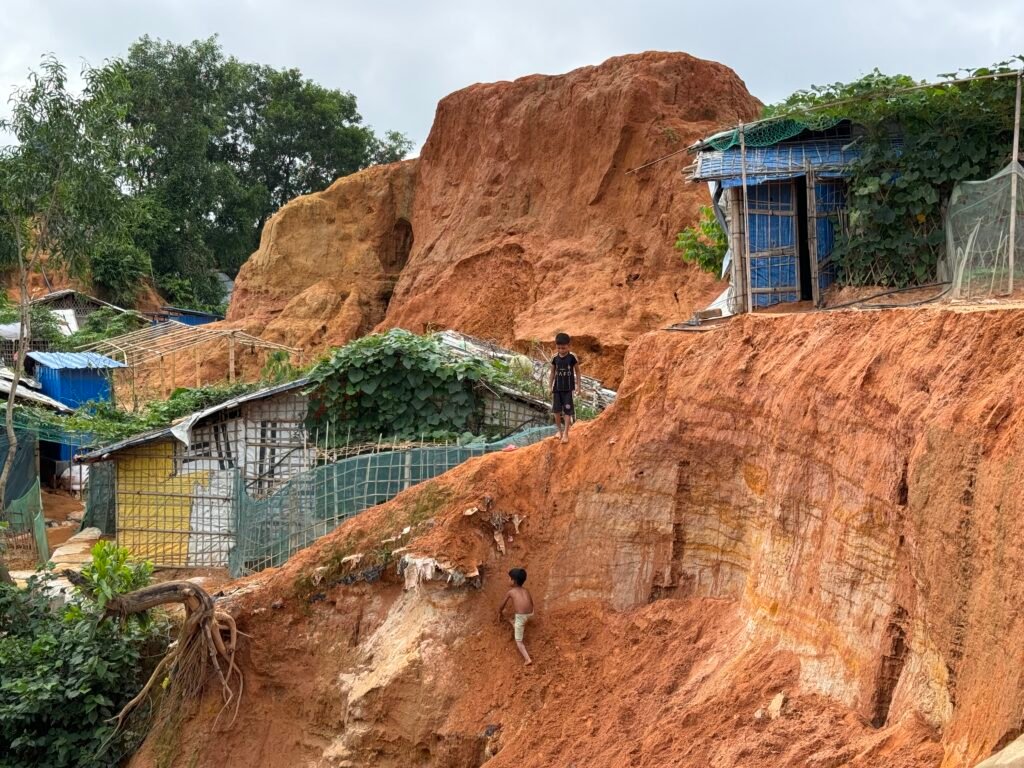
More than one million Rohingya refugees endure severe hardships during the monsoon season within the world’s largest refugee camp in Bangladesh. As the monsoon approaches, refugees face heightened risks and displacement due to escalating circumstances. These circumstances have severe repercussions for their well-being, including health issues, water shortages, the proliferation of diseases, inadequate rest and sleep, mental health challenges, and limited access to essential daily necessities.
“Another elderly woman name as Roshida khatun shared her experience, stating that she has not witnessed such severe rainfall in the past eight years, considering her refugee life in Bangladesh. This year’s monsoon season has been particularly devastating in Cox’s Bazar. She further emphasized that thousands of elderly individuals and half a million children are at heightened risk due to the intense monsoonal rainfall.
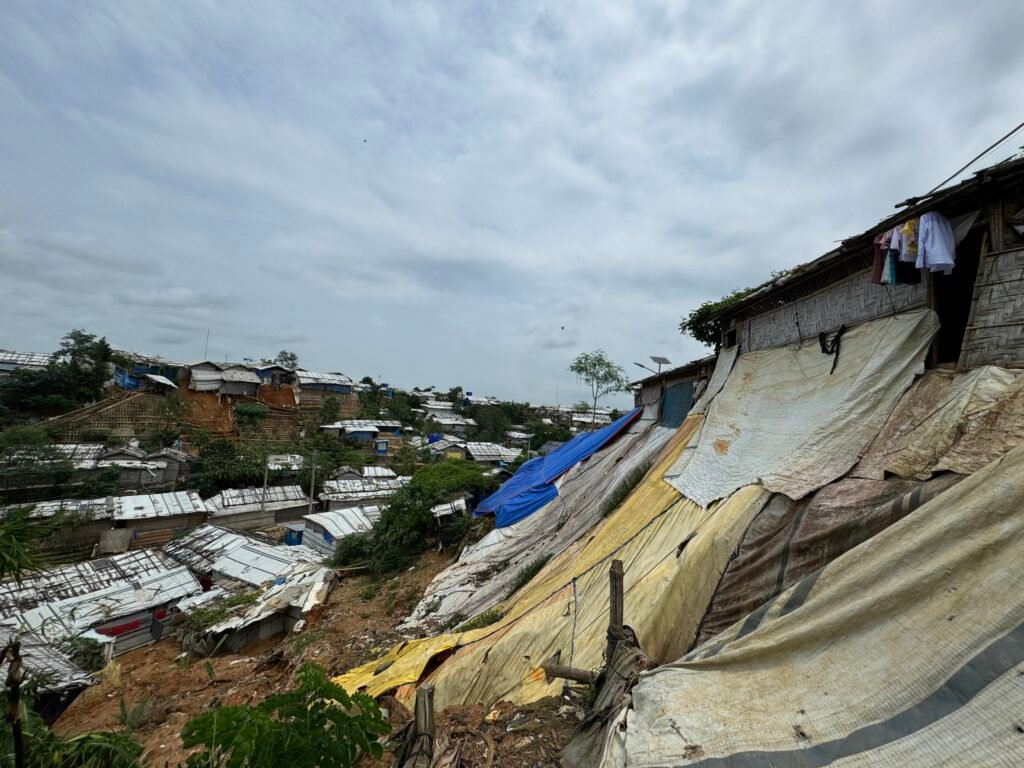
Prolonged rainfall has severely affected the livelihoods of Rohingya refugees, as most individuals are unable to engage in employment within the camps. Consequently, they are limited to small-scale business ventures along the roadsides. Children are deprived of access to mosques and learning centers, as these facilities have been severely damaged by the rainfall. Additionally, numerous other facilities have been rendered inaccessible due to the torrential downpours experienced within the camps.
One of the young Rohingya students, named Yaser, has expressed his inability to attend mosques and other learning facilities due to the heavy rainfall. He is compelled to remain indoors, taking responsibility for the maintenance of his shelter, and is unable to venture outside for play.
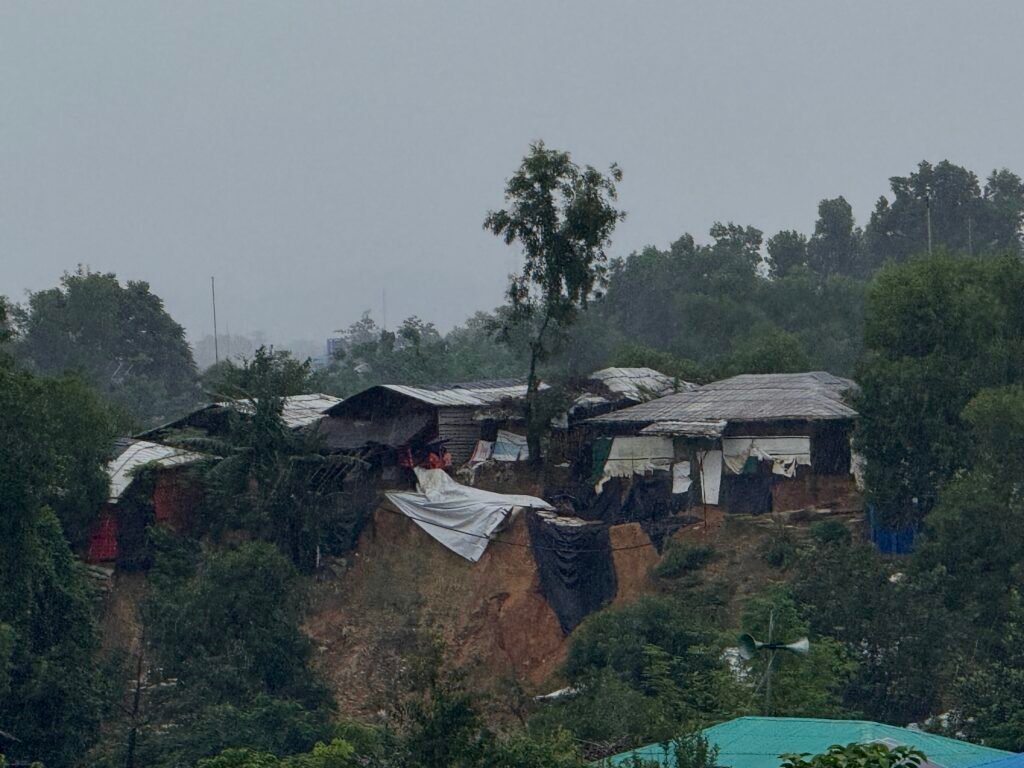
In response to the severe rainfall, numerous non-governmental organizations (NGOs) and camp authorities have been diligently working to ensure the safety of the community. These organizations have been actively disseminating awareness through loudspeakers, urging residents to avoid hazardous and risky areas and attempting to relocate families to secure zones. However, they acknowledge that they cannot fully control the unpredictable nature of the weather.
